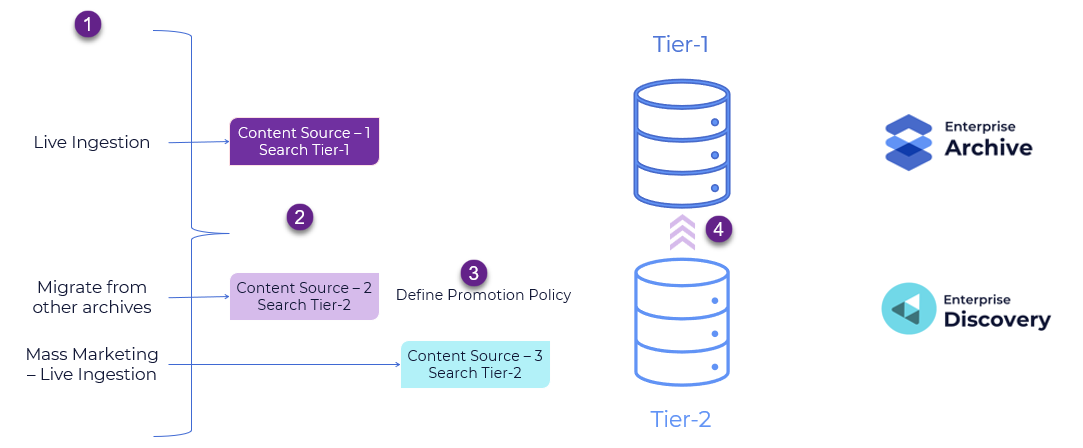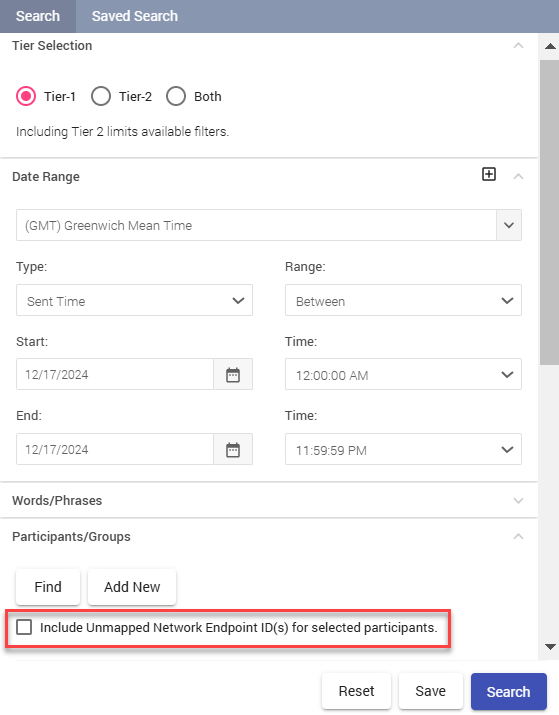Age Based Promotion
Age-Based Promotion feature is designed to optimize data management within Smarsh Enterprise Archive. By automating the migration of data from Tier 2 storage to Tier 1 storage, this enhances data accessibility, improves search performance, and reduces storage costs. This strategic approach enables organizations to make the most of their data assets while maintaining compliance and security standards.
Key Objectives
Accelerate Data Access: Promote high-value, aged data from Tier 2 to Tier 1, enabling faster and more comprehensive search capabilities.
Optimize Storage Costs: Reduce storage expenses by archiving less critical, older data in the more cost-effective Tier 2 storage.
Streamline Data Management: Automate the data migration process, reducing manual intervention and potential errors.
By effectively managing data lifecycle and optimizing storage costs, Age Based Promotion empowers organizations to make the most of their data assets while maintaining compliance and security standards.
This feature is controlled via a feature flag, contact Smarsh Support to enable this feature.
Workflow
The workflow depicted in the image illustrates the process of promoting data from Tier 2 (DLM) storage to Tier 1 storage based on predefined criteria.

Data Sources:
Tier 1: Live Ingestion: New data is continuously ingested into the system.
Tier 2:
Migrate from Other Archives: Existing data is migrated from legacy archives.
Mass Marketing - Live Ingestion: Mass marketing emails are ingested in real-time.
Content Source Creation:
Different Content Sources are added for different categories of Data
Data is indexed in Tier 2, enabling metadata-based search.
Define Promotion Policy: A promotion policy is defined, specifying criteria for data migration.
Promotion Process and Tier 1 Storage:
Eligible data, as determined by the promotion policy, is migrated from Tier 2 to Tier 1 storage.
Bulk promotion of messages from Tier-2 to Tier-1 based on message age. Age of message is calculated based on Message Sent time.
The migrated data is indexed in Tier 1, enabling full-text search.
Promoted messages are available for Enterprise Archive and Enterprise Discovery.
Note
Multiple content sources for Tier-2 is not yet supported
Do not promote mass marketing emails. Only promote migrated data.
Messages initially ingested to Tier 2 and subsequently added to the Index-on-Demand (IOD) case will maintain their Tier 2 behaviour, even after being bulk-promoted. This is due to IOD's dedicated case-specific index that ensures that even if data is bulk-promoted from Tier 2 storage, messages collected when in Tier 2 will continue to retain their Tier 2 behaviour.
Promotion Behavioral Changes: Auto-Generated Employees
For messages directly ingested into Tier 1, the Enterprise Archive system automatically generates participants for unidentified senders and recipients. However, this behavior differs for messages promoted from Tier 2 to Tier 1.
Key Changes:
No Auto-Generated Participants: During the promotion process, the system will not create auto-generated participants for unidentified senders or recipients.
When the Include Unmapped Network Endpoint ID(s) for selected participants checkbox is selected during a Tier 1 participant search, the system performs the following actions:
The system obtains the network endpoints for the selected participants from the identity database.
The system then performs a query for messages that have the selected mapped participant(s) and messages with retrieved network endpoints that were not mapped to the selected participant(s).
This option is currently available only in the Classic UI and not yet supported in the new UI. Contact Smarsh Support for more details.

Impact on Reporting:
Renamed Report: The "Auto-Generated Participants" report will be renamed to "Unmapped Network Endpoint IDs Report."
Report Content: The report will include two CSV files:
Auto-Generated Participants: This file will list auto-generated participants created for messages directly ingested into Tier 1.
Unidentified Participants Encountered During Promotion: This file will list unmapped network endpoint IDs identified during the promotion process.